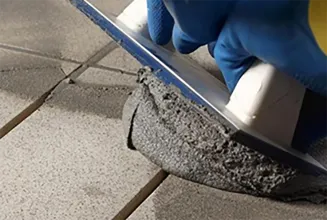
दिसम्बर . 24, 2024 11:17 Back to list
hpmc uses in detergent
The Role of HPMC in Detergent Formulations
Hydroxypropyl methylcellulose (HPMC) is a versatile cellulose ether widely used in various industrial applications, including the formulation of detergents. With the rising demand for more effective and environmentally friendly cleaning products, HPMC has gained significant attention due to its unique properties that enhance detergent formulations. This article explores the uses and benefits of HPMC in detergents, highlighting how it contributes to performance, stability, and consumer satisfaction.
Overview of HPMC
HPMC is a semi-synthetic polymer derived from natural cellulose. Its chemical structure allows for modifications that impart various properties to detergents, such as thickening, binding, and film-forming capabilities. HPMC is water-soluble and can create gels, making it an essential ingredient in both liquid and powder detergents. Its non-toxic and biodegradable nature aligns with the growing consumer preference for eco-friendly products, making it an attractive additive for modern cleaning solutions.
Thickening Agent
One of the primary functions of HPMC in detergents is as a thickening agent. The viscosity imparted by HPMC improves the texture and consistency of liquid detergents, ensuring they flow easily but adhere optimally to surfaces during application. A thickened formulation can enhance user experience, making the product easier to handle and apply, ultimately leading to higher consumer satisfaction.
Stabilizing Emulsions
HPMC plays a crucial role in stabilizing emulsions in detergent formulations. Emulsions are mixtures of immiscible liquids, such as oils and water, often found in detergents. HPMC helps to maintain the stability of these formulations by preventing the separation of oil and water phases. This stability is vital for the effectiveness of the product, ensuring that all components remain uniformly distributed throughout the product's shelf life.
hpmc uses in detergent

Enhancing Cleaning Performance
The cleaning efficacy of detergents can be significantly improved with the incorporation of HPMC. Its ability to form a viscous gel helps keep active cleaning agents in contact with the surface for a longer duration, enhancing their effectiveness. This property is particularly beneficial in stain removal applications, where prolonged contact is essential for breaking down stubborn stains. Additionally, HPMC can encapsulate fragrance and other beneficial additives, ensuring they are released gradually, resulting in a more desirable user experience.
Improved Surface Compatibility
HPMC also contributes to the compatibility of detergents with various surfaces. Whether it’s fabrics, hard surfaces, or delicate materials, HPMC acts as a protective film that helps to prevent damage during the cleaning process. This film-forming property is critical for products designed for sensitive applications, such as those meant for delicate fabrics or finishes. By reducing friction and protecting surfaces, HPMC ensures that the cleaning process is effective yet gentle, meeting the demands of consumers who seek both efficacy and care in their cleaning products.
Eco-Friendly Characteristics
As consumers become increasingly aware of environmental issues, the demand for sustainable and biodegradable products has surged. HPMC stands out as a natural, biodegradable additive that aligns perfectly with this trend. Many manufacturers are reformulating their products to reduce their environmental footprint, and HPMC provides an excellent alternative to synthetic additives that may harm the environment. Its incorporation not only enhances product performance but also aligns with the values of environmentally-conscious consumers.
Conclusion
Hydroxypropyl methylcellulose has established itself as a critical component in the formulation of modern detergents. Its multifunctional properties make it an indispensable ingredient that enhances viscosity, stabilizes emulsions, improves cleaning performance, and ensures surface compatibility while being environmentally friendly. As the detergent market continues to evolve, the role of HPMC is likely to become even more prominent, driving innovation and meeting the growing demands of consumers. Manufacturers who recognize and incorporate the benefits of HPMC in their products will not only improve product performance but also contribute to a more sustainable future for the cleaning industry.
-
Versatile Hpmc Uses in Different Industries
NewsJun.19,2025
-
Redispersible Powder's Role in Enhancing Durability of Construction Products
NewsJun.19,2025
-
Hydroxyethyl Cellulose Applications Driving Green Industrial Processes
NewsJun.19,2025
-
Exploring Different Redispersible Polymer Powder
NewsJun.19,2025
-
Choosing the Right Mortar Bonding Agent
NewsJun.19,2025
-
Applications and Significance of China Hpmc in Modern Industries
NewsJun.19,2025







